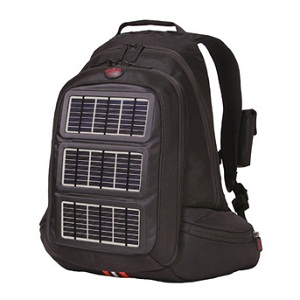Solar clothes on the horizon
 Imagine a t-shirt that not only looked cool, but could keep you cool or warm, depending on the season, and even charge your iPod. This kind of technology is just around the corner thanks to a team of scientists at the University of Southern California (USC). By using organic photovoltaic (OPV) solar film, the clothes of tomorrow may soon be here today.
Imagine a t-shirt that not only looked cool, but could keep you cool or warm, depending on the season, and even charge your iPod. This kind of technology is just around the corner thanks to a team of scientists at the University of Southern California (USC). By using organic photovoltaic (OPV) solar film, the clothes of tomorrow may soon be here today.
Although the OPV solar cells only generate a small fraction of the power that a more traditional silicon cell can, the advantages in flexibility of the OPV cells allows for many more creative applications of solar energy. One of these is incorporating the solar film into clothing that can produce a small charge, which could potentially power cooling cells to keep the active person slightly less sweaty and heating elements in jackets and snow pants for the bitter cold of winter.
“Organic photovoltaic cells have been proposed as a means to achieve low-cost energy due to their ease of manufacture, light weight, and compatibility with flexible substrates,” wrote Chongwu Zhou, a professor of electrical engineering at the USC Viterbi School of Engineering, in a paper recently published in the journal ACS Nano.
OPV film has already been applied to the home by using it to tint windows as a special energy capturing convenience that can draw a small charge. But, in the past few years, a process called chemical vapor deposition has made it much more cost effective to create graphene, a highly conductive transparent form of carbon made into sheets that are only atoms thick. It is by using this highly conductive graphene in concert with the OPV cell that allows for the solar energy transfer to take place.
The team first uses methane gas to deposit the graphene film on a nickel plate. They then lay down a protective layer of thermo plastic on top and remove the nickel on the bottom with an acid bath. Next, they attach the plastic protected graphene sheet to a flexible polymer sheet and rinse.
Lewis Gomez De Arco, a doctoral student and a member of the team that built the graphene OPVs, said in their ACS Nano report, “They could be hung as curtains in homes or even made into fabric and be worn as power generating clothing. I can imagine people powering their cellular phone or music/video device while jogging in the sun.”



